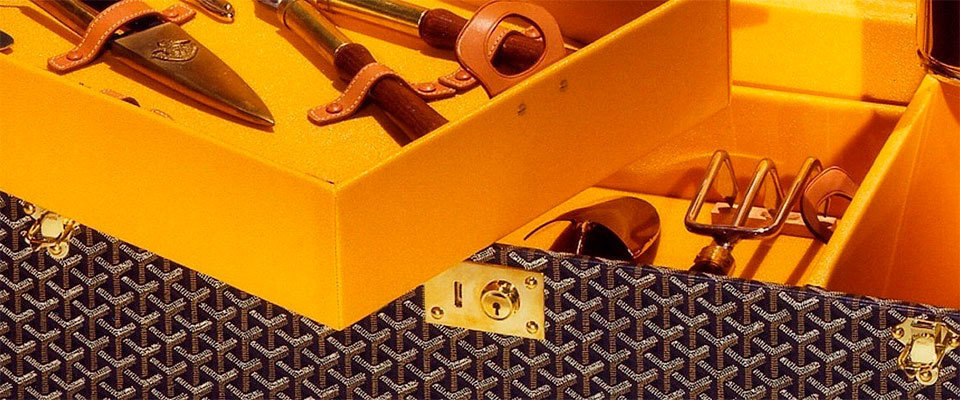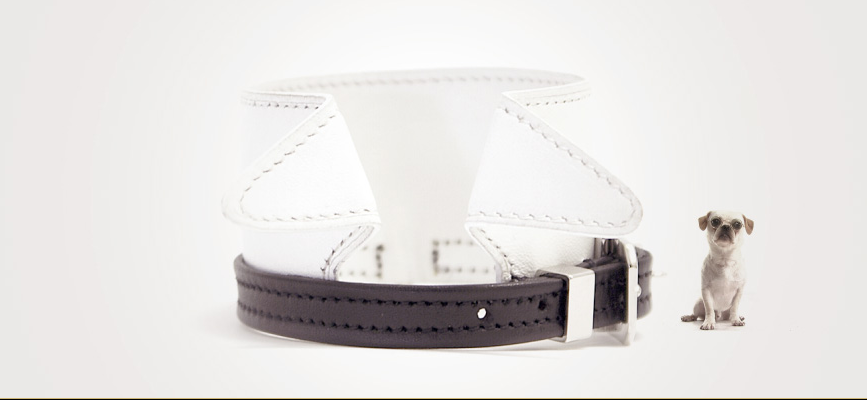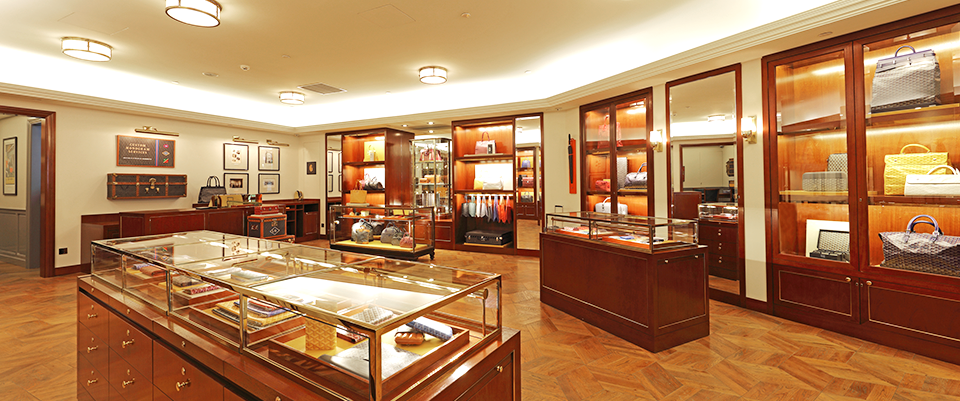INSIGHT | A Blessing or Curse? Low-profile Luxury Brand Goyard Is Hitting A Tipping Point
September 15,2019
It seems that Goyard bags have been exposed more frequently in Beijing and Shanghai overnight, often in the same context as Louis Vuitton and other luxury brands, and they frequently appear in various popular luxury introduction recommendation articles. Some netizens even claim that they are witnessing many Goyard bags in the subway.
Goyard has been in China since 2008, and it may now be hitting an important tipping point in sales. While some luxury brands are reaching out to a broader, younger audience, Goyard is quietly picking up the VIPs it once had. What is special about Goyard is that it almost never initiates marketing campaigns or speaks to the media. The product is its only carrier of word-of-mouth marketing, and its traffic is 100% from "EMV" - (Earned Media Value).
When consumers are bombarded by numerous online and offline advertisements every day, buying low-profile luxury brands has become a form of ostentatious consumption.
Paradoxically, despite Goyardтs low profile, its products and classic monogram are no longer in the "minority" in the current Chinese market, but have emerged all over the place. So, is the brand really becoming more popular, or is it just the product or the monogram that happens to be in vogue? Does this popularity damage the long-term value of a luxury brand? What risks will the brand face in the future?

Why is Goyard Gaining Popularity from this Tote Bag?
In 2010, someone photographed Faye Wong carrying Goyard while shopping and shared the photo on Weibo, bringing the brand its first public attention from social media. Since then, the St. Louis tote bag L size, now priced at 12,780RMB, can be seen everywhere in Beijing and Shanghai. This may be because Goyard's highly recognizable classic monogram coincides with the current trend, or maybe it has spread rapidly and widely in today's digital communication environment, driven by its celebrity fans. Consumers are more likely to be attracted to low-profile brands they "discover" if they are over-marketed by more and more luxury brands (which can lead to aesthetic fatigue). Weтve seen some netizens describing the classic Goyard monogram like this: "I used to think the Goyard monogram looked ugly, but now I like it more and more..."
The hip-hop community, which loves big logos, seems to be rediscovering this century-old classic brand. Pharrell Williams talks about Goyard in his song, and Kanye West customized a St. Louis Tote bag for his daughter, North. In China, Kris Wu and Faye Wong are also big fans of Goyard.

Goyard, Always Innovating
When consumers buy Goyard tote bags, they are surprised by their ultra-light weight. This is actually a canvas fabric invented by Edmond, the second generation of the Goyard family, who also invented the classic Monogram, and insisted on using only natural dyes and hand-painting finished products.
Fabric innovation, bag production and pattern drawing have become the core of the brand, and the keys to the authenticity of its products. It can be seen from its history that ingenuity and innovation have always been rooted in Goyard, which enables it to better face imitation products than other brands with higher technical barriers.
In order to break through the stereotypes of "canvas" and "hard case", Goyard recently collaborated with Snoopy to launch the Anjou St. Louis Two Sided Tote Bag, and now the popular St. Louis Tote Bag, which was originally only brown, can be seen in colors like red, orange, yellow, green and blue.

When we opened Goyard's website, we were surprised to find a function whereby users can directly interact with the brand, which is also the most important service the brand provides for high-end customers -- personalized customization.
As time has passed, Goyard, which once only served celebrities and elites, and even refused some orders, can now provide every customer with personalized customization, which is one of the barriers for brands to avoid imitation products.
Although it has never opened an e-commerce channel, Goyard has not completely given up communicating with users in other digital ways. In fact, it released the first film in its history as early as 2012. It then opened an official Sina Weibo account in 2013, an official WeChat account in 2015, an Instagram account in 2016, and Weibo and WeChat were its preferred channels for product release when it launched the new Artois bag in 2018.
Goyardтs luxury pet accessories collection, тChic Du Chienт, was selected for the "Young & Digital List" launched by Luxe.co this year. (See details: тІ. )
Since Goyard has always maintained an image of "high luxury", it enables pet-lovers to have a new understanding of the brand image through the тChic Du Chienт collection, and finds a common language to communicate with users.

Goyard, Low Profile Can Be A Double-edged Sword
When we sample interviewed consumers about Goyardтs brand awareness, their attitudes were sharply polarized. Some of them told us they now only buy Goyard bags because other luxury brands are too easy to copy, but many more said that they knew nothing about the brand and could not understand why it was so expensive when they saw people carrying it. Some netizens even mentioned Goyard in Zhihu's question "What's the ugliest design you've ever seen?"
Despite its 100-year history, faced with a completely different communication environment and retail ecosystem, if Goyard is silent at the point when it should release its brand power, it will inevitably miss out on the best window that can give the brand a voice.
Specifically, if a brand fails to control the circulation of goods in the Chinese market at this stage, its brand image and brand value will undoubtedly suffer a heavy blow. When we called the Goyard store, we found that the brand does not even provide an inspection service.
Goyard has resisted automation and mass production, which has kept its production low and this may prove inadequate in the face of Chinaтs voracious demand, but many brands may be overwhelmed in the future in the face of the massive demand from the Chinese market.
According to Goyardтs Weibo account, many netizens sent messages to enquire about products or prices long ago, but Goyard simply responded "please call or visit the brandтs shop". As a result, many consumers who have visited the Goyard Paris store say that queues outside the store are common, because only a certain number of customers can be served at one time.
Goyard currently has stores in 21 cities around the world and it insists on not expanding its e-commerce business. It entered China in 2008 and opened its first store at the Peninsula Hotel in Hong Kong in 2008. The second store was opened in Shanghai in 2012 and then it was changed from the Bund to Plaza 66 (below). The third store was opened in Beijing in 2013, and this was followed by another new one in Pacific Place, Hong Kong in 2014. The most recent one is in IFS Chengdu.

After calling Goyard stores for a consultation, Luxe.co learned that, due to limited production, the waiting time is 1-3 months on average, and it is closer to 3-6 months for hot products. It seems that the shortage of products in the Chinese market is becoming more and more serious.
There is starting to be a proliferation of fake products with the increasing visibility of the tote bag and the classic monogram. We saw the Goyard X Kaws co-branded phone case on a famous e-commerce website with a price tag of only 35RMB or so.
This phenomenon requires brands to be on high alert, because this is not the first time it has occurred. Louis Vuitton faced a similar situation around 2012. At that time, the monogram design was highly recognizable and popular, but fakes soon began to spread. Jean-Jacques Guiony, CFO of LVMH, said that, although the overall sales of Chinese consumers still showed a "mid-single-digit" growth, benefiting from overseas tourism shopping, sales in mainland China are still "flattish".
New customers may lose patience and give up if businesses cannot solve the problem of supply and demand, and a flood of fake products will certainly make loyal VIPs lose face and they may even decide to choose other brands. Goyard, which is still operating independently, undoubtedly faces a dilemma based on these problems.
Conclusion
According to The Real Real's report on second-hand luxury consignment sales for the 2018 Christmas season, a second-hand Goyard can cost 80% of the original price, and Goyard is only below Hermes in the ranking of women's favorite brands. It holds its value in the second-hand market because it is like an heirloom, fashion insiders' first choice of bag, rather than a flashy luxury item.
Luxury retail analyst, Pam Danziger, believes that, as a privately held company, Goyard can act based on its own ideas compared to some large groups of luxury brands, and does not have to consider shareholders or group management and so on as much. However, needless to say, as an independent luxury brand, it is relatively weak in investment. Facing the emerging China market with its strong demand and rapidly-evolving ecosystem, while it is the brandтs attitude to keep a low profile, it is also its choice to act.












Comments